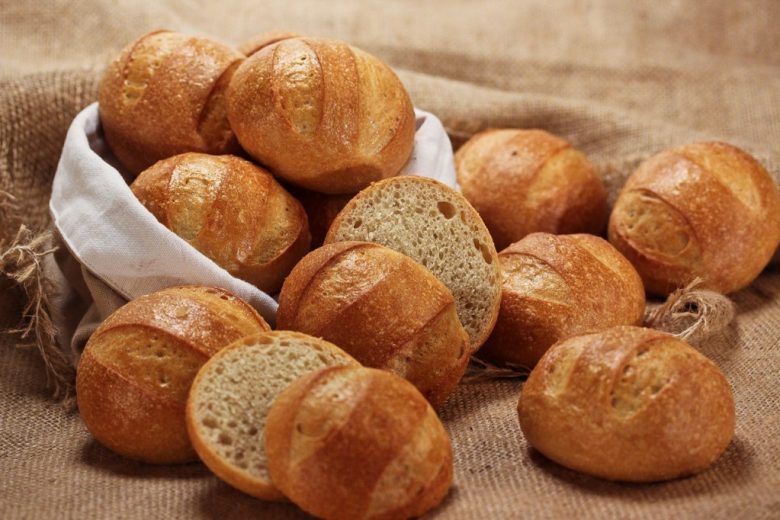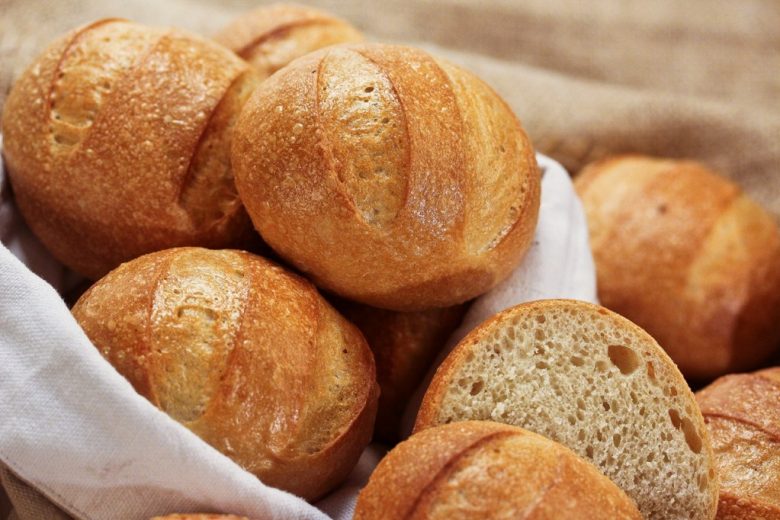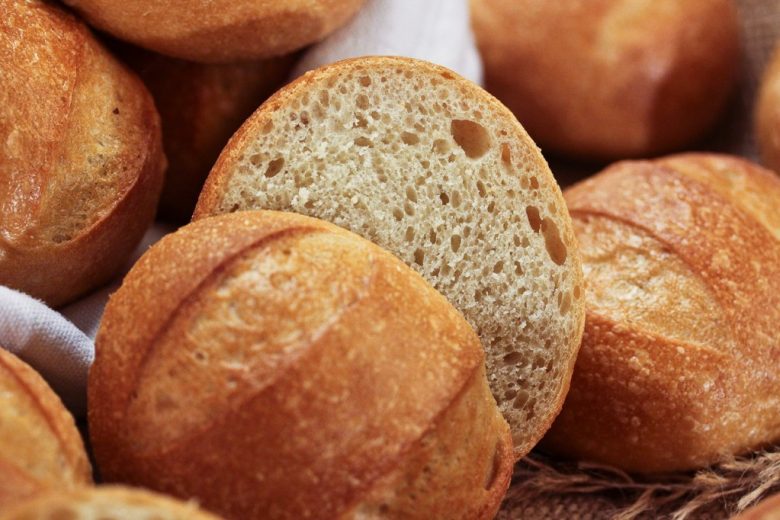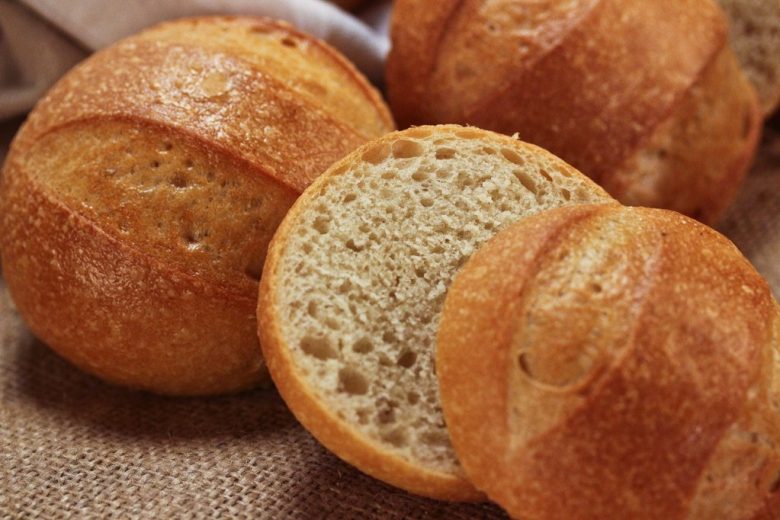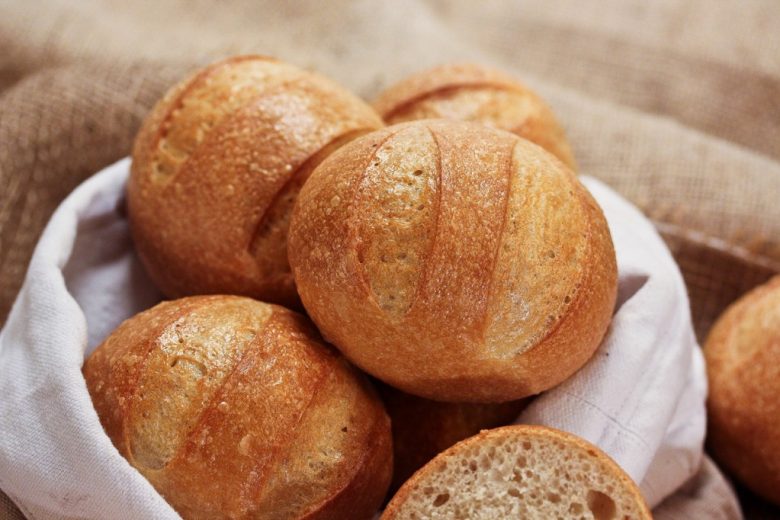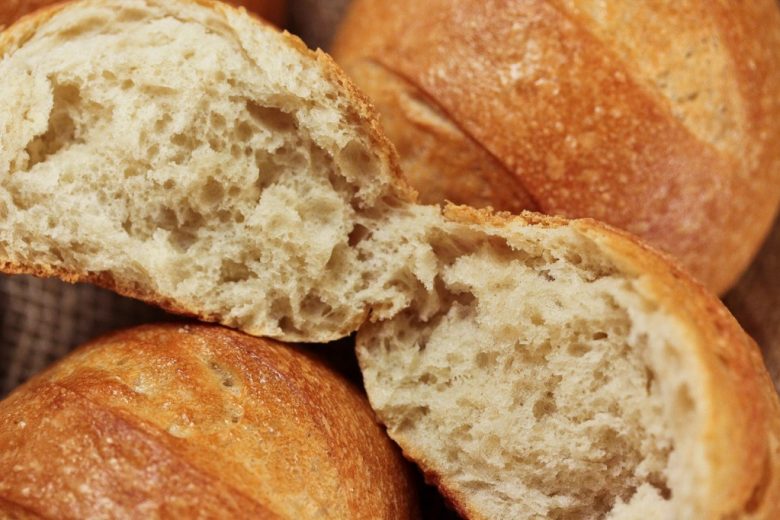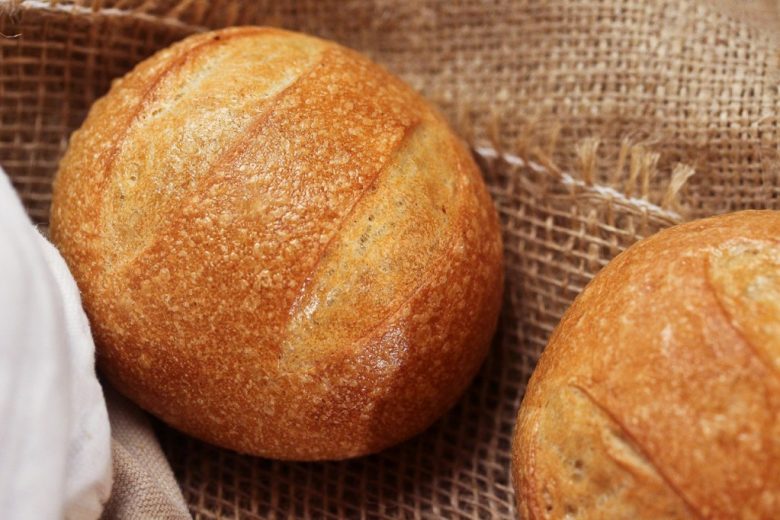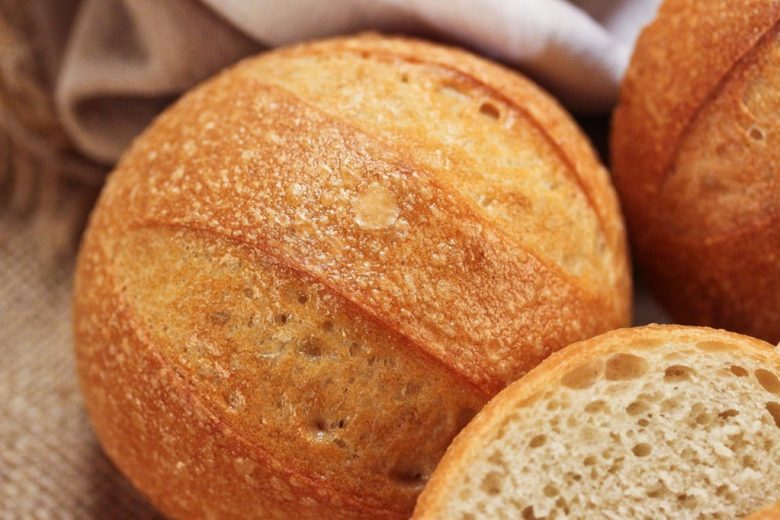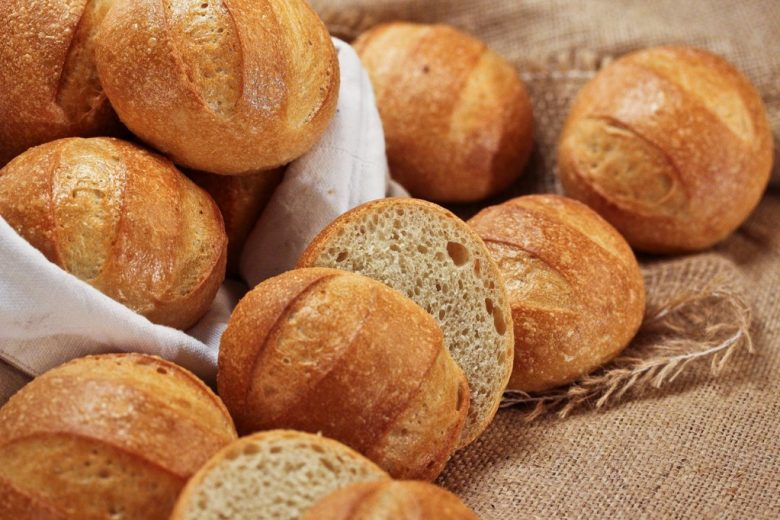Flavor Rolls
For my next baking experiment I tried combining the salt-yeast process, a pre-dough, and a long, cold fermentation. Just as with other fermented products like wine and cheese, the long fermentation time increases the richness of flavor. Though these rolls are characterized by a slightly lower volume, they are unbeatable in taste due to the use of a pre-dough and long-term process.
Long-term process means that the dough rises very slowly at a temperature of 2-4°C. The yeast slowly produces carbon dioxide, alcohol, and flavor from the cool rise. Intense flavor, a light crisp, and a tender crumb are the “side-effects” of this process. The color of the crust is a little darker and the volume is a little smaller than usual. During the rise, it is important that the surface does not dry out. This can happen due to the air movement in the cooler.
Another important point with long-term processing is the amount of pre-dough used. The longer the cold rise lasts, the less pre-dough should be used. The following table gives the recommendation for use of pre-dough, though these should always be adapted for your own conditions!
Flour and Pre-dough are always calculated with 1000g wheat flour as reference:
Rise time at 2-4°C Flour content/Vorteig (DY 200):
- 4-6 Hours 700g Wheat Flour /600g Pre-dough
- 8-12 Hours 800g Wheat Flour /400g Pre-dough
- 14 Hours 850g Wheat Flour /300g Pre-dough
- 16 Hours 900g Wheat Flour /200g Pre-dough
Recipe
For a total weight of 1700g of dough:
Salt-Yeast-Solution:
- 200g Water
- 20g Sea Salt
- 15g Yeast
RT: 4 – 48 Hours in the fridge
Pre-dough:
- 200g Wheat Flour Type 700
- 200g Water
- 2g Yeast
RT: 15-18 Hours in the fridge
Main Dough:
- 402g Pre-dough
- 235g Salt-Yeast Solution
- 800g Wheat Flour Type 700
- 200g Water
- 30g Butter
- 30g Liquid malt
The ingredients are kneaded for 7 minutes on slow and 4-5 minutes on fast in the mixer. The dough should be well-kneaded and have a temperature of 24-26°C.
Then the dough is covered and left to rise for 30 minutes during which the dough is folded 1x. Then the dough is weighed out into 60-70g pieces and rolled into round dough balls.
The round dough pieces are placed immediately on a baking tray lined with baking paper (mind the distance between). After forming you can let them stand for 10-15 minutes at room temperature. However this short pre-proof depends on the duration of the cold storage time and can be adjusted accordingly. The advantage of this is to ensure that the dough is fully proofed when removed from the refrigerator (ready to bake).
The dough is baked with steam at 250°C reducing to 230°C/ 15-17 minutes. The rolls should be scored before baking- a razor blade helps here.
A small additional tip: If you have trouble recognizing when the dough is fully proofed, score the dough before the long final proof. This prevents the dough from collapsing when scoring a fully proofed roll!
If you would like, you can place the dough together lengthwise and score them with one long cut.


